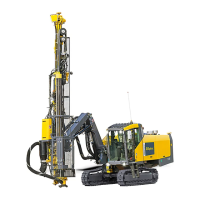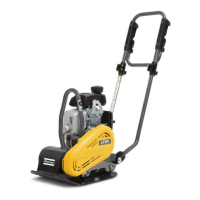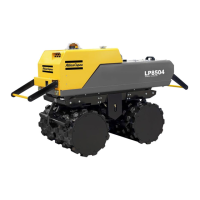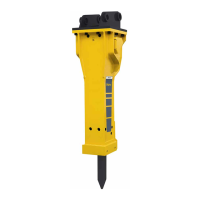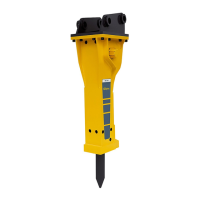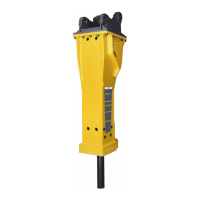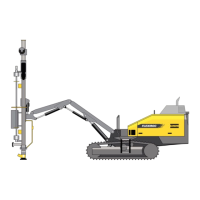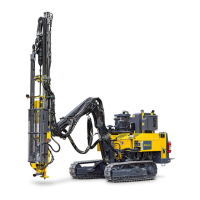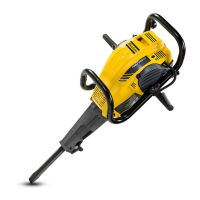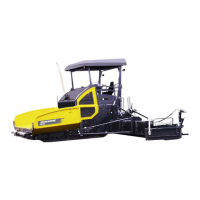SmartROC D65 T4F 10 Options
186 No: 713944459.6 en
2 Seal ring
3 Down-the-hole rock drill
4 Drill pipe
5 Thread adapter
6 Tube for input compressed air
7 Air swivel
8 Rotation unit
9 Spacer pipe
10 Outlet swivel
11 First deflector
12 Second deflector
13 Sample hose
14 Sample hose
15 Cyclone
16 Intermediate chamber
17 Cone splitter
18 Jones riffle splitter
19 Arm
20 Metzke blowdown valve - Option
Drill bit and seal ring
RC drill bits are similar to conventional drill bits externally. They break the rock in the same
way and they are sharpened in the same way.
The main difference is the route of the flushing air and the cuttings. The clean flushing air
is led to hole bottom through slits on the outside of the drill bit. On the lower part of the drill
bit are two openings where the mixture of cuttings and flushing air each flow into separate
channels. The two lower channels merge together into one upper channel about 100 mm
into the drill bit.
Since two channels are combined into one, the upper channel can be worn down to be-
come oval. This can lead to rapid wear of the down-the-hole rock drill's inner tube. Drill bits
exhibiting such wear should be removed from operation.
During normal drilling, flushing air and cuttings are routed up between the hole wall and the
outside of the drill pipes, but during RC drilling, preferably no cuttings should be routed this
way. Instead everything should be routed into the drill bit's two openings. For this reason,
there is a seal ring just above the drill bit. The difference in diameter between the seal ring
and the drill bit should not be more than 3 mm. If there is much water in the hole, this
should not be more than 1-2 mm.
A good seal between the seal ring and the borehole wall is the most important factor for
collecting as much of the cuttings as possible.
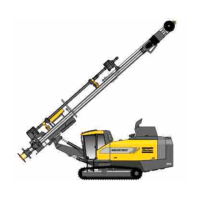
